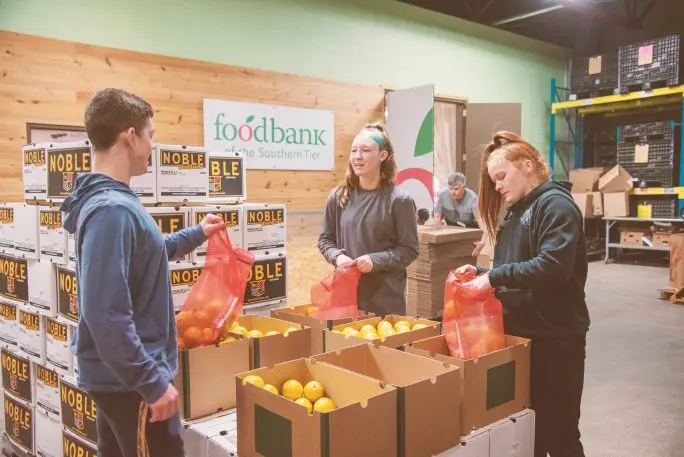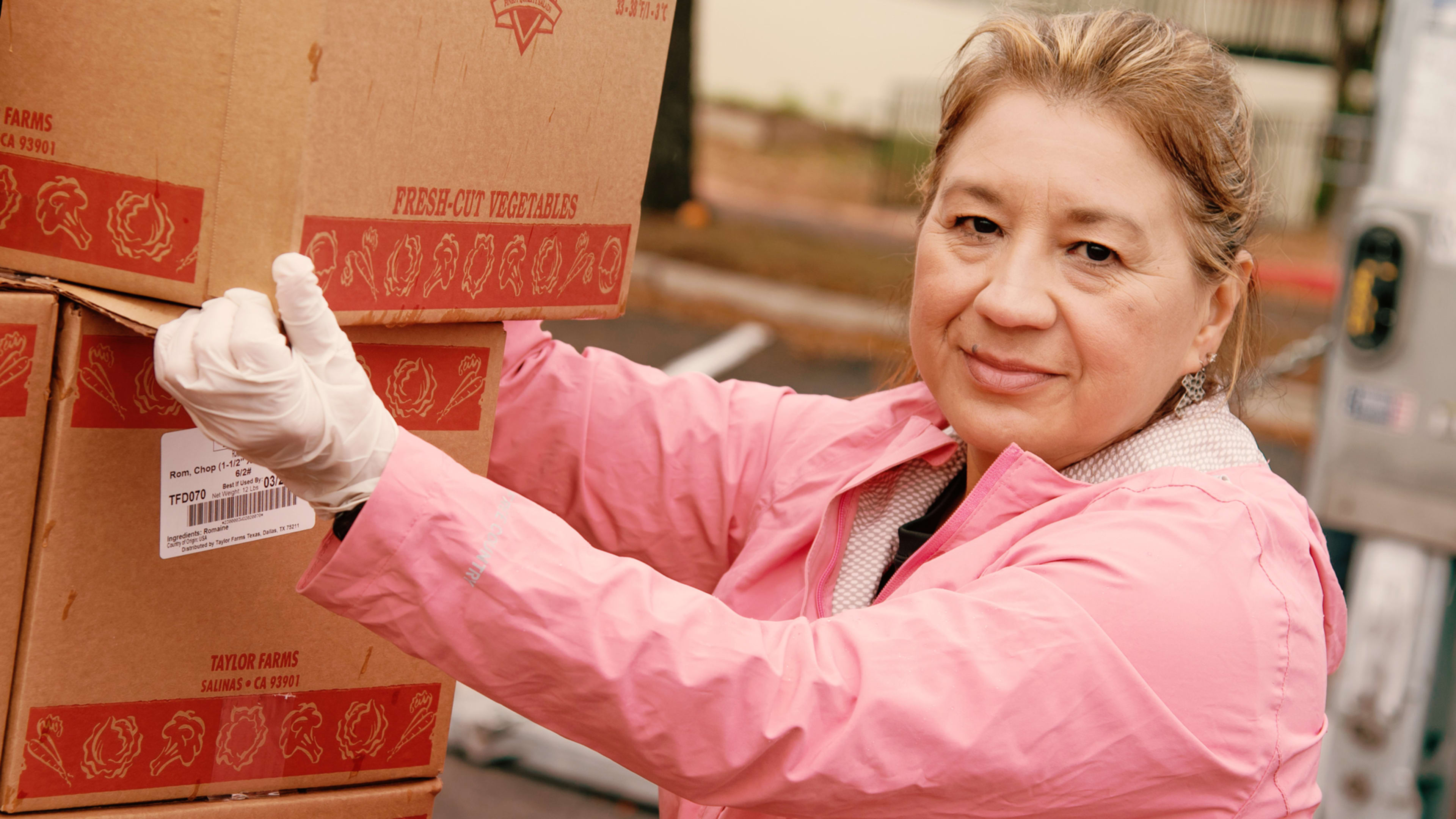Last week, Amazon founder Jeff Bezos announced that he’s donating $100 million to Feeding America, to help support its network of 200 food banks across the United States.
Other big names have come out as well since the COVID-19 pandemic began to pledge support for Feeding America—celebrities such as Ryan Reynolds and Blake Lively, Jimmy Fallon, Jimmy Kimmel, and Tom Brady, as well as brands such as Panda Express, Starbucks, and American Express, among others.
However generous, it’s a drop in the bucket needed to take on the uniquely tragic circumstances facing food banks right now. “The pandemic for us has been this perfect storm of circumstances all at once,” says Lauren Biedron, Feeding America’s VP of corporate partnerships.
Prior to the pandemic, there were already 37 million people in America who were facing hunger, which translates to about one in nine Americans. Now with school closures and a historic sudden increase in unemployment, that number will skyrocket, adding approximately 17 million more to the food insecure, about 54 million people. (Comparatively, in 2009 during the Great Recession, the FDA was reporting that about 50 million people were facing food insecurity.)
On the ground, this increase is stark, as illustrated by a miles-long car line waiting for a Pennsylvania food bank, just outside Pittsburgh. The New York Times reported this week that Omaha, Nebraska-based Food Bank for the Heartland typically buys $73,000 of food in a month this time of year but has spent $675,000 in the past four weeks.
Hundreds of cars wait to receive food from the Greater Community Food Bank in Duquesne. Collection begins at noon. @PghFoodBank @PittsburghPG pic.twitter.com/94YFaO7dqX
— Andrew Rush (@andrewrush) March 30, 2020
Today, that 54 million number is coupled with a forced shift in Feeding America’s business model to keep staff, volunteers, and the people they serve safe.
“What’s unique and challenging about that is this spike is coming at a time when we’re seeing a decrease in the food donations we rely on, as well as a steep drop-off in the volunteer workforce that food banks also normally rely on,” says Biedron. “So they’re being forced to grapple with these disruptions to their business model in a new, unprecedented way.”
So while Bezos’s $100 million sounds huge, the organization estimates that the cost of buying food to offset the drop in donations, and the decline in its volunteer labor force, is about $1.4 billion higher in a six-month period.
Feeding America is comprised of 200 member food banks, responsible for providing food in every county in the United States and Puerto Rico. The food banks act as clearinghouses in these communities, sourcing and distributing food to people in need through local pantry, shelter, or soup kitchens, of which there are about 60,000 supported by Feeding America food banks.

At the Feeding America national office in Chicago, a team of experts is establishing and updating preparedness and practices guides for local food banks, providing insight on how to handle everything from human resources to distribution methods to inventory. That team is also holding regular calls and webinars with food banks to help share best practices, so food banks are learning from one another as they grapple with what Biedron calls a real-time evolution of how they work.
“We also have a supply-chain team that’s working tirelessly to address the declining food donations, looking for opportunities for us to purchase food, and pursue other innovative partnerships and donation streams,” says Biedron.
The food-distribution model has been upended, as the traditional methods are a high-contact way of procuring food. Biedron says that a lot of food banks are doing things like shifting to drive-through distribution, where a volunteer puts a box of food in your trunk. “Food is certainly getting out to the community, but food banks have been forced to get creative so they can protect the people they’re serving as well as their staff and volunteers,” she says.
In states like Louisiana, Arizona, and Washington, the National Guard has been deployed to help food banks deal with the drop in volunteers to distribute the food.
Feeding America is also embracing any opportunity to spread the word on both the surge in need and letting those who may be experiencing food insecurity for the first time that food banks are available to them. On Thursday, ABC’s Good Morning America hosted A Day of Hope broadcast to help support the organization. Starbucks has also donated about $167,000 in advertising media space to Feeding America.
Biedron believes that that effort extends beyond broadcast networks and major brands to you as well. “We’re welcoming financial contributions, food contributions, and opportunities to raise awareness,” says Biedron. “Any opportunity to get the message out about the work food banks are doing now—and will be doing in the months to come—is really critical.”
Recognize your brand’s excellence by applying to this year’s Brands That Matter Awards before the final deadline, June 7.
Sign up for Brands That Matter notifications here.
